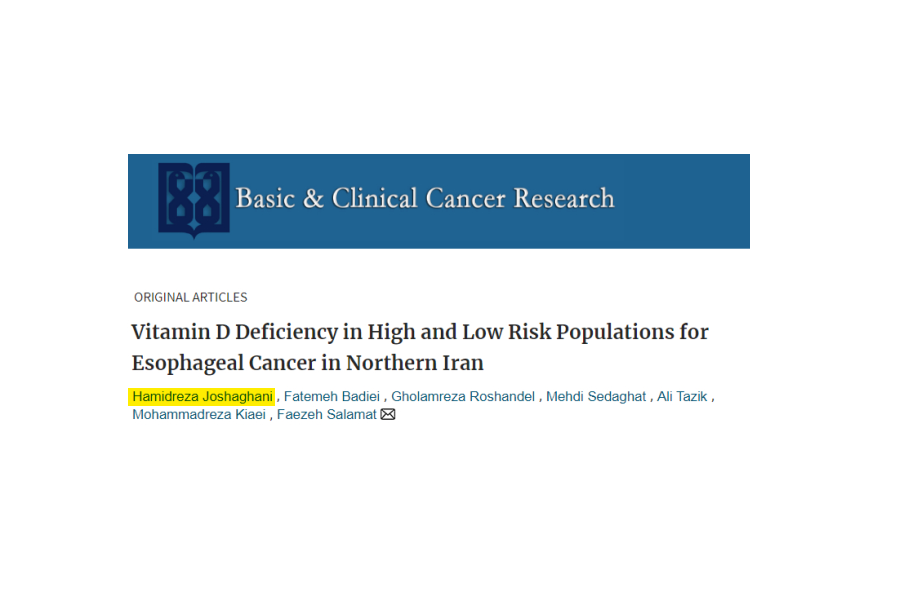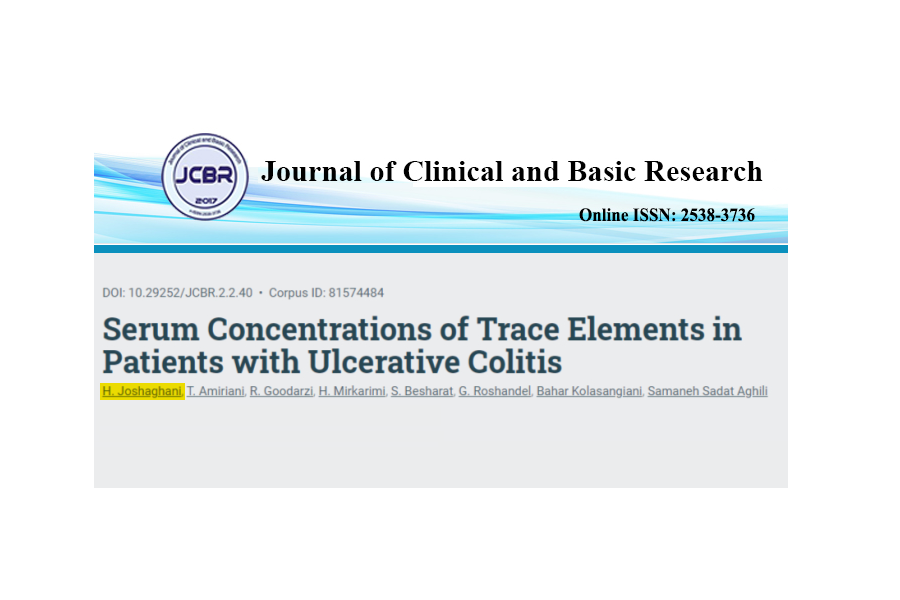کمبود ویتامین D در جمعیت های پرخطر و کم خطر برای سرطان مری در شمال ایران
ABSTRACT
vitamin D. We aimed to assess serum vitamin D levels in high and low-risk populations for EC in Northern Iran. Methods:: This cross sectional study was conducted in Golestan province, Northern Iran. Based on the incidence rates of EC, the province was divided into high-risk and low-risk populations. A stratified cluster sampling method was used. Serum vitamin D level was assessed by ELISA method. The proportions of vitamin D deficiency were compared between the two populations. Results: Totally, 246 persons were studied with mean age of 50.7 years. 96 subjects were men (39%). 119 subjects (48.8%) were from high-risk and 127 (51.6%) were from low-risk area. Thirty-two of 244 (13.1%) persons had vitamin D deficiency. The proportions of vitamin D deficiency were 7.9% and 18.3% in high- and low-risk populations (p=0.02). Conclusion: We found a significant higher level of vitamin D deficiency in low-risk than high-risk population for EC. Regarding the ecological design of this study, causal inference could not be made from our results. So, it is recommended to investigate this issue in future individual-level studies in this area and other high-risk populations.




پاسخ دهید
میخواهید به بحث بپیوندید؟مشارکت رایگان.